A commonly cited possible advantage of Epsom salt in the garden, especially about pepper plants is magnesium sulfate. This article explains how to use Epsom salt practically in the garden by considering its effects on soil fertility and plant health. Gardeners can, therefore, make informed decisions about their crops through an understanding of these two the scientific basis and the recommended practices. The merits, correct application methods, and disadvantages of adding Epsom salt into your gardening activities will be discussed here with a focus on strong, healthy, productive pepper plants growing. With this guide, readers are expected to gain knowledge to optimize their gardening using Epsom salts strategically.
Why Use epsom salt for pepper Plants?
Epsom salt is made up of magnesium and sulfur, which are the major constituents in this compound and its presence ensures healthiness and better productivity of pepper plants. This compound works well in photosynthesis by helping chlorophyll synthesis, which is important for converting light to energy. Equally important, it assists in the uptake of other key nutrients such as nitrogen and phosphorous. On the contrary, sulfur is necessary for making certain amino acids and proteins, which form an essential part of the plants’ growth process. Epsom salts can help avoid these deficiencies that lead to fewer leaves than normal, no growth or very little yield. Thus, applying Epsom salt can promote healthier peppers with more foliage and an increased potential to bear fruit.
What are some benefits of epsom salt in the garden?
There are several advantageous effects related to using epsom salts in gardening. The main importance of magnesium lies in its ability to correct chlorophyll deficiency through direct influence on leaf area development hence increasing rate of photosynthesis. The recommended foliar application concentration is 1 tablespoon per gallon of water based on technical parameters indicating a need for immediate nutrient sources. Similarly, sulfur aids in amino acid construction, deeming it significant for developing strong, resilient plants. Studies show that sulphur plays a role in producing vital enzymes and vitamins essential for plant health. In addition, Epsom salt increases soil structure, leading to fine aggregate formation and improving aeration and root penetration. Hence regular applications based on soil test results may result into high fertility levels and productivity within your garden.
How does magnesium present in epsom salt affect pepper plants?
In supporting overall good condition as well as high yields among varieties of pepper plants used by human beings Mg found inside Epsom salts has multiple roles to play. Magnesium serves as an integral part of the Chlorophyll molecule needed by photosynthesis for energy production that leads to growth.Too, Magnesium helps activate certain plant enzymes that play a vital role in various bio-chemical reactions. This makes the uptake of nutrients much more efficient in pepper plants, and thus they respond by producing more fertile flowers, which are fruit bearing as well as being stronger enough to withstand environmental hardships.
What is the function of sulfur in fruit production by pepper plants?
When synthesizing certain amino acids and proteins essential for plant growth, it is one of elements required for making chloroplasts. As a result, this raises photosynthesis levels leading to more energy production hence vigorous development of fruits. Similarly, sulfur initiates enzyme formation and vitamin synthesis thus improves general plant healthiness and boosts its immunity against infections resulting in increased yield and quality of fruits.
How to Use Epsom Salt in the Garden
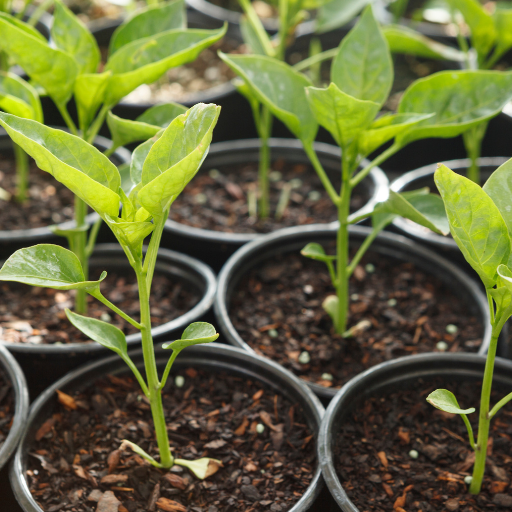
When using Epsom salt in the garden, commence by having a soil test carried out to determine the magnesium levels and plant-specific requirements. As a general solution, dissolve one tablespoon of Epsom salt in one gallon of water and use it as a foliar spray monthly. For specific crops like tomatoes or peppers, apply one tablespoon of Epsom salt onto the ground around each plant’s base every 14 days. The dissolved state should always be maintained so as not to clog up the soil or cause any soil imbalances. In lawns, three pounds of Epsom salts per area will encourage lush grass growth and deep green color when applied with a spreader to cover 1,250 square feet. Adjust for individual plants’ responses and garden health status.
How much epsom salt per gallon of water?
When applying Epsom salt in gardens, it is recommended that most plants should have one tablespoon dissolved in each gallon of water. This can be done once monthly as a foliar spray directly on leaves to provide them with vital nutrients via their system for photosynthesis. Similar amount may be used more frequently at least twice every month for certain crops like tomatoes or pepper assuring constant availability without causing accumulation or imbalance in nutrient supply into the plants. The frequency and strength of solution can vary depending on how you observe your plant has responded.
What is the best method to use epsom salt for pepper plants?
The finest approach towards which you can deploy epson salt concerning pepper plants entails both soil and foliar application since this would optimize uptake efficiency by these components. Take one gallon of water and mix with one table spoonful of Epson Salt then let all leaves fully receive this solution from above every fortnight till they get sufficiently coated well enough before drying them off entirely through air spraying then they must start taking up magnesium (Mg) which is an essential trace element required at this stage leading to healthy leaves and high productivity of the plant.
In addition, mix one tablespoon of Epsom salt into the soil at the location where each pepper plant will be placed. This should be done every four to six weeks depending on the plant’s health and speed of growth. The foliage part should also have essential nutrients as well as minerals in order to continue growing properly and this can be realized through a combination of fertilizer application and watering system use.
Technical Parameters:
Foliar Application:
- Concentration: 1 tablespoon per gallon
- Frequency: Every two weeks
Soil Application:
- Amount: 1 tablespoon per plant
- Frequency: Every four to six weeks
These parameters are recommended based on their established efficacy in promoting the health and productivity of pepper plants, ensuring a balanced and accessible nutrient supply.
How do you make a foliar spray with epsom salt?
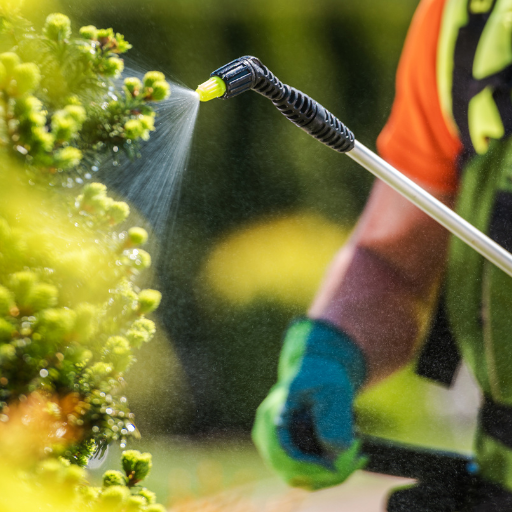
Start making a solution of Epsom salt foliar spray by dissolving one tablespoon of Epsom salt in a gallon of water. The mixture should be thoroughly stirred to ensure all the Epsom salts are completely dissolved. Once ready, pour the mixture into a spray bottle. Apply it to plants making sure that both tops and undersides of leaves get fully covered with it. It is preferable to use foliar applications during cooler times such as early morning or late afternoon in order to avoid evaporation and maximize absorption rates. For the best results, apply the foliar sprays every two weeks.
What time is good for applying foliar spray?
When is the most suitable time for spraying leaves with a solution?
The perfect time for leaf spraying solutions application is during early mornings and late afternoons which matters because;
Temperature and Humidity:
- Morning: Spraying your plants in the very first hours of the day when temperatures are low and humidity levels are fairly high can minimize chances of leaf burnt and enhance absorption rate.
- Afternoon: Late afternoon applications also prevent excessive evaporation allowing sufficient nutrient uptake before dropping temperature at night.
Photosynthesis: Open stomata (pores on leaf surface) during these cooler periods facilitate better absorption of foliar nutrients.
Technical Parameters:
- Apply at temperatures below 85°F (29°C) to minimize risk of foliar burn-up,
- Ensure relative humidity above 50% enhances nutrient intake.
- A fine mist sprayer should be used for good coverage without run off.
These guidelines have led to an effective use of this method as it ensures that plants obtain nutrients effectively through a limited supply chain, thus maximizing efficiency in their growth patterns.
Is epsom salt Effective as a fertilizer for Pepper Plants?
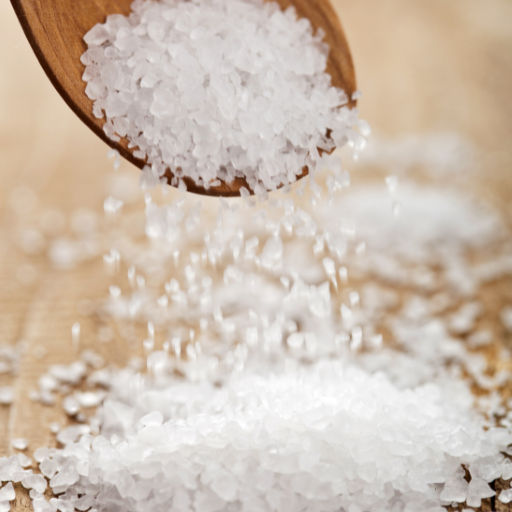
If used properly, Epsom salt, also known as magnesium sulfate, can be a useful supplement for the pepper plant. Chlorophyll is made of magnesium which helps in the process by which a plant produces food through photosynthesis. Plants with insufficient amount of magnesium will have yellow leaves with green veins and this affects the overall health and productivity of the plant. Epsom salt provides a readily available source of magnesium that can address these deficiencies and help in promoting greener and healthier foliage. Additionally sulfur found on Epsom salt is beneficial for several processes in plants including enzymes functioning and protein synthesis.
Most significantly, Epsom salts are best applied either as soil amendments or foliar sprays but it is important not to apply too much.
How many times should I give my peppers epsom salts?
Pepper plants require about one month between applications of Epsom salts.Such an approach ensures that there is enough supply of magnesium without overfertilization risks.The above ratio entails diluting one tablespoonful of Epsom salts into one gallon of water to form a diluted foliar spray.This solution may be poured directly onto the leaves.Still,Epson salt crystals could be sprinkled around each plant base before being soaked up completely.For any symptoms showing magnesium deficiency or excess levels in your garden,you need to adjust your feeding patterns accordingly.
Can epsom salts be sprayed on pepper plants?
The use of Epsom salt as a foliar spray may prove extremely valuable, particularly when growing peppers.Foliar application allows for rapid absorption. Deficiencies in nutrients can easily be addressed by its effective distribution through spraying method.This method is notably effective when nutritional requirements are high during flowering and fruiting phases.However,before using it you should first know recommended quantities and rates so as to avoid having burnt leaves. Besides, spraying very early morning or night hours would reduce burning risks due to excessive light.Efficiently, Epsom salt should be used as a foliar spray after frequently monitoring and adjusting based on plant needs.
Is epsom salt bad for pepper plants?
Too much application of Epsom salts may lead to negative results even though they have some benefits to the peppers.Over –application causes unbalanced soils leading to either nutrient deficiencies or toxicities.Inappropriate amount of magnesium affects calcium and potassium uptake; these are very essential nutrients in the growth of the peppers and forming fruit.For this reason, it is important for one to follow recommended dosages while observing if there is any sign of nutritional imbalance.The frequency of using Epsom salts can be reduced if leaves begin turning yellowish indicating compromised health of the plant.
Comparing epsom salt with Other Organic Fertilizers
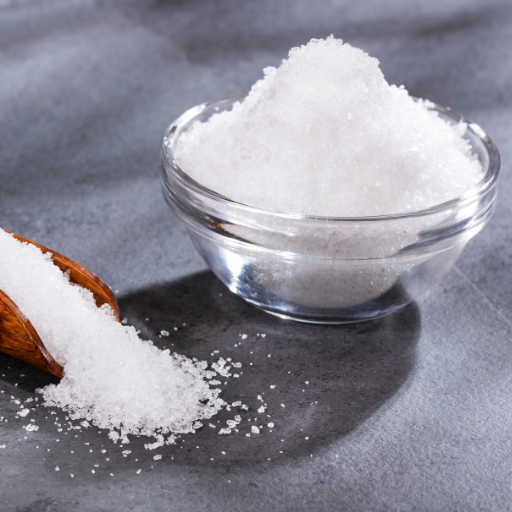
Specifically, for one to evaluate Epsom salts in relation to other organic manures; it is important to take into account the individual nutrient contributions and benefits of each. The essential role of magnesium and sulphur in chlorophyll synthesis as well as enzyme systems is primarily performed by Epsom salt. Nevertheless, there are other organic manures such as compost, manure and bone meal which provide a wide range of nutrients. For example compost enriches the soil with various macro and micro nutrients, improves soil structure and enhances microbial activity. On its part, manure supplies nitrogen, phosphorous and potassium that are required for the general growth of the plant. Also bones meal comprise high level of phosphorus which is vital for root formation and blooming. Additionally when used in conjunction with comprehensive organic fertilizers Epsom salt acts as an excellent supplement thus helping to maintain more balanced nutrient profile for optimal plant health.
What are some other types of organic fertilizer for pepper plants?
Other kinds of organic fertilizers for pepper plants include compost, fish emulsion, worm castings .Compost which is composed mostly from decomposed organic matter enhances soil structure ,water retention ,and provides a range of necessary nutrients.Fish emulsion is a liquid fertilizer that contains high amounts of Nitrogen(6%), Phosphorous (5%) ,Potassium (2%),and trace minerals known for their rapid nutrient availability plus beneficial microbial activity.Worm castings produced from earthworms must be taken into consideration because they add a highly diverse array of bio available nutrients ,enhance soil aeration while boosting plant immunity.Epsom Salt can be integrated with these organic fertilizers creating a more balanced growing environment where pepper plants will thrive.
How does Magnesium Sulphate differ from Epsom salt?
While magnesium sulfate is referred to chemically identical compounds as Epsom salt; its form plus application differs significantly.In brief terms,this compound is made up of magnesium,sulphur,and oxygen,is widely used in many areas such as agriculture,medicine and industry. Epsom salt which is a popular name for magnesium sulphate heptahydrate,is commonly used in gardening,cosmetic applications and home remedies.However quite often,it happens that the terms Epsom salt and hydrated magnesium sulphate are both utilized interchangeably.
Tips for Using Epsom Salt in the Garden

It is vital to follow these instructions to acquire the best results when employing Epsom salt in your garden. For example, prior to planting, incorporate Epsom salt into the soil by blending one tablespoon per square foot; this boost seed germination and root growth. Dissolve one tablespoon of Epsom salt in a gallon of water and use as a foliar spray every two weeks for established plants to encourage robust flowering and lush growth. In case there are certain deficiencies like magnesium deficiency causing yellowing of leaves or other mineral shortages, then apply directly to the soil where there is 2 tablespoons dissolved thoroughly on each gallon water. It is important that you water your plants with enough water after application for faster nutrient uptake.
How do I put epsom salt around pepper plant base?
Putting Epsom salt around the base of pepper plants calls for mixing one or two tablespoons of Epsom salt into a gallon of water until it forms a solution. Subsequently, throughout the growing season, use this solution to water the pepper plants every fortnight. Alternatively, you can spread one tablespoon of the salt around each plant’s base directly onto the soil. Afterward make sure that you lightly mix up the soil so as to enable quick dissolving of salts which will reach roots conveniently and then saturate them completely with liquid. This way assists in increasing mineral uptake, preventing magnesium deficiency and nurturing sturdy development plus numerous yields.
Are there any drawbacks to using epsom salt for plants?
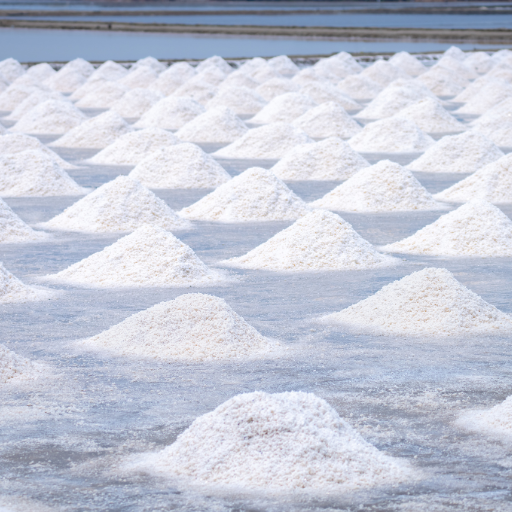
Although there are potential drawbacks to using Epsom salt like an improvement in nutrient uptake and stronger plant growth. Consequently, excessive application of the salt could imbalance soil nutrients causing more harm than good especially if magnesium levels are already adequate. Also, as time passes on, this accumulation can lead to a higher soil salinity that retards plant development as well as water absorption. Another thing to note is that the problem Epsom salt addresses on magnesium shortage is not very common; hence; unwarranted use may prove futile. Always do a soil test before adding Epsom salt.
Is too much magnesium harmful?
Indeed, excess magnesium in the soil harms plants. If there is too much magnesium in soils it creates an imbalance with other important minerals like calcium and potassium which compete for plant uptake pathways within plants. This disruption leads to nutrient deficiencies that retard plant growth and vigour. Furthermore, excessive amounts of magnesium lead to poor water absorption by plants because they increase soil salinity that lowers its suitability for agriculture.The importance of avoiding excess usage of magnesium can never be overemphasized because it can cause salinity in soils.
What are some signs of over-application of epsom salts?
When Epsom salt has been applied excessively several key characteristics may appear in plants. A major sign is leaf scorching where the edges turn brown and dry up while others have leaves turning yellow resulting into chlorosis due to nutritional imbalances such as iron deficiency. Also, these plants may fail to grow properly or exhibit poor health since increased salinity adds up difficulties associated with absorbing water and essential nutrients . Besides this condition inhibiting root development’s growth rate along with uptake efficiency through water increases through a build-up in magnesia causes more damage than good
In addition, from a technical point of view, high levels of Mg decrease Ca2+ (Ca) availability and K+ (K), which are macronutrients necessary for healthy plant growth. Soil tests with magnesium above 200 ppm may indicate overapplication. Moreover, soil testing EC values of 2.0 mS/cm can be indicative of increased soil salinity that limits plant absorption. Thus, conducting consistent soil tests and keeping an eye on these parameters will help to ensure nutrient balance and good soil health.
Frequently Asked Questions (FAQs)
Q: What is Epsom salt and how does it benefit pepper plants?
A: Epsom salt is a natural mineral compound mainly composed of magnesium sulfate. It benefits pepper plants by providing essential nutrients like magnesium, which helps to strengthen plant cell walls, enhance nutrient uptake, and boost overall plant health.
Q: How do I use Epsom salt for peppers in my vegetable garden?
A: To use Epsom salt for peppers, you can add 1-2 tablespoons of Epsom salt per foot of plant height around the base of your pepper plants every 3-4 weeks. You can also dissolve a cup of Epsom salt in a gallon of water and apply it to the soil or use it as a foliar spray with a tank sprayer.
Q: When should I apply Epsom salt to my pepper plants?
A: Epsom salt can be applied at various stages of growth, including at transplanting, during the growing season, and when the plants are flowering and fruiting. The application frequency is generally every 3-4 weeks.
Q: Can Epsom salt be used for other types of peppers besides hot peppers?
A: Yes, Epsom salt can be used for different types of peppers, including bell peppers, jalapenos, and other varieties. Its benefits are not limited to hot peppers alone.
Q: Is there a risk of using too much Epsom salt for peppers?
A: Yes, overuse of Epsom salt can lead to an imbalance of nutrients in the soil, causing potential harm to your pepper plants. It is recommended to follow proper dosage guidelines, such as 1-2 tablespoons per foot of plant height, to avoid any negative effects.
Q: Where can I buy Epsom salts for gardening?
A: Epsom salts can be purchased at most garden centers, home improvement stores, and online retailers. Look for products labeled for gardening use to ensure they are suitable for your vegetable garden.
Q: Can I use Epsom salt for other plants in my vegetable garden?
A: Yes, Epsom salt can be beneficial for other plants, including tomato plants, cucumbers, and roses. It provides essential magnesium and sulfur, which are important for various plant functions and overall health.
Q: How does Epsom salt affect the soil pH for pepper plants?
A: Epsom salt as a soil amendment does not significantly alter the pH of the soil. It primarily provides magnesium and sulfur, which are beneficial for plant growth without drastically changing the soil’s acidity or alkalinity.
Q: Are there any specific tips for using Epsom salt when planting seeds or transplants?
A: When planting seeds or transplants, you can mix a small amount of Epsom salt into the planting hole to provide an initial boost of magnesium. This helps young plants establish themselves more quickly and promotes healthy growth.






